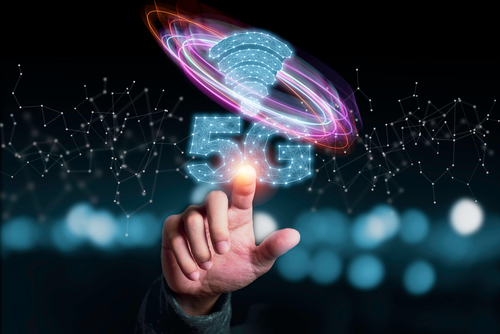What are the key 5G trends to watch out for?
In this era of digitsation, data has the power to change the world. 5G is expected to bring about a technological utopia and unlock new opportunities for telcos and consumers alike. A few key trends that 5G will bring about are:
- The distribution of video content will differ significantly: When 5G is mainstream, new video applications will be adopted, including 4K/8K videos, VR immersive experiences, AR, ultra-low latency live broadcast, high-speed mobile video communication, mobile communication in congested areas, multimedia, and IoV.
- On the backbone of 5G, future smart cities will be built: The development of new smart transportation methods could be accelerated, the use of 5G might reduce commute times drastically, and smart buildings can offer a more comfortable working environment, boosting productivity and cutting costs for companies.
- A completely different shopping experience: The separate worlds of physical and online shopping will come together to create an experience that will permanently change the way customers interact with brands.
- 5G will drive the future of industry 4.0: Businesses will be able to employ developing technologies like AI to increase productivity and acquire additional insights from the data they generate.
- 5G will be a boon to healthcare: There are numerous scenarios in which speedier diagnosis could save lives. For example, when one requires the services of a specialised surgeon but is unable to be present physically, 5G will have the ability to bridge the gap.
Will 5G affect structured cabling in the data centre?
It is safe to state that the data centre will need significant changes in order to support and enable 5G and the use of AI and machine learning will be essential. The massive volume of data handled will be on edge. In order to reduce latency and service population centres, more edge computing or micro data centres will go online. In the world and especially in the Middle East, fibre optic cables will supersede copper connections, and single-mode fibre will displace multimode fibre as more capacity is required. Additionally, it will be necessary for data centres to accommodate a variety of optics.
What will be the impact of 5G on fibre optic cabling?
UAE is among the GCC nations that have implemented some of the earliest 5G networks in the world. According to some estimates, the GCC region will have 62 million 5G mobile subscribers by 2026, ranking second in the world and making up 73% of all mobile subscriptions in the region. In order to support this next generation network, there must be a lot of fibre-connected access points. The resilience of fibre to the deployment conditions becomes crucial as fibre will spread everywhere. To ensure smooth cable deployments to these many access endpoints, bend insensitive fibres and fibres that maintain light in the core of the fibre, even under tight bends will be required. The number of fibre counts of cables needed to cover 5G areas will also increase dramatically as a result of the enormous growth in endpoints. For these access points, there will also be a push to combine electrical and fibre optic cabling.
What cabling options can telecom carriers choose when it comes to 5G networks?
Although 5G will undoubtedly represent a significant advancement in the current network, it also has the potential to be both revolutionary and evolutionary. The possibilities are practically limitless, but achieving the goal will require a more intelligent and dense infrastructure.
For these high density networks, bend insensitive fibres such as G.651.A1 fibres, that can bend to a radius of roughly 10 to 15 mm, and G.657.A2 fibres, which can bend to a radius of 7.5 mm, are advised. In the past, there have been some compatibility concerns when connecting older G.652.D fibres to newer G.657.A2 fibres, but new fibre options, like STL’s Stellar fibre, address those issues when linked to older fibres while still giving that enhanced G.657.A2 performance.
Cables become too huge for current infrastructure, such as subterranean ducting, as fibre counts rise to handle the explosion in the number of endpoints, and joining of these cables becomes very labor-intensive if a lot of fibres need to be linked one by one. Ribbon cables can join 12 fibres together at once, which helps with this problem. A new type of ribbon cable, Intermittently Bonded Ribbon cables such as the STL Celesta cables, are also of a very compact design allowing for higher fibre counts in existing infrastructure. Additionally, providing power to a large number of access endpoints can be difficult. For this reason, hybrid cables, which combine electrical power with optical fibres to deliver high-speed connections, are a preferred cabling choice for access points.









Discussion about this post